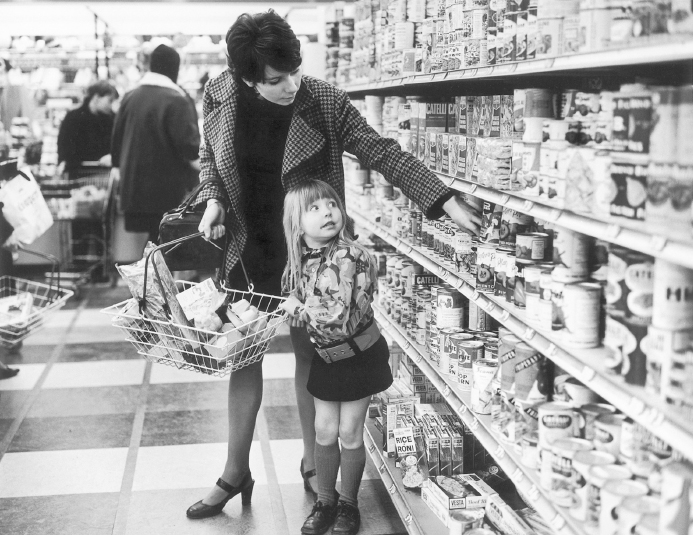The Affluent Society
The 1960s were also a time of rapid social change across western Europe. A decade of economic growth and high wages meant that an expanding middle class could increasingly enjoy the benefits of the consumer revolution that began in the 1950s (see Chapter 28). However, what contemporaries called “the age of affluence” had clear limits. The living standards of workers and immigrants did not rise as fast as those of the educated middle classes, and the expanding economy did not always reach underdeveloped regions, such as southern Italy. Nonetheless the 1960s brought general prosperity to millions, and the construction of a full-
The 1960s saw the blossoming of mass travel and tourism. With month-
Consumerism also changed life at home. Household appliances that were still luxuries in the 1950s were now commonplace; televisions overtook radio as a popular form of domestic entertainment, while vacuum cleaners, refrigerators, and washing machines transformed women’s housework. The establishment of U.S.-style self-

Many intellectuals and cultural critics worried that rampant consumerism created a bland conformity that wiped out regional and national traditions. Others complained that these changes threatened to Americanize Europe. Such worries were overstated. European nations preserved distinctive national cultures even during the consumer revolution, but social change nonetheless occurred. The moral authority of religious doctrine lost ground before the growing materialism of consumer society. In predominantly Protestant lands, church membership and regular attendance both declined significantly. Even in traditionally Catholic countries, outward signs of popular belief seemed to falter. At the Second Vatican Council, convened from 1962 to 1965, Catholic leaders agreed on a number of reforms meant to democratize and renew the church and broaden its appeal. These resolutions did little to halt the slide toward secularization, however.